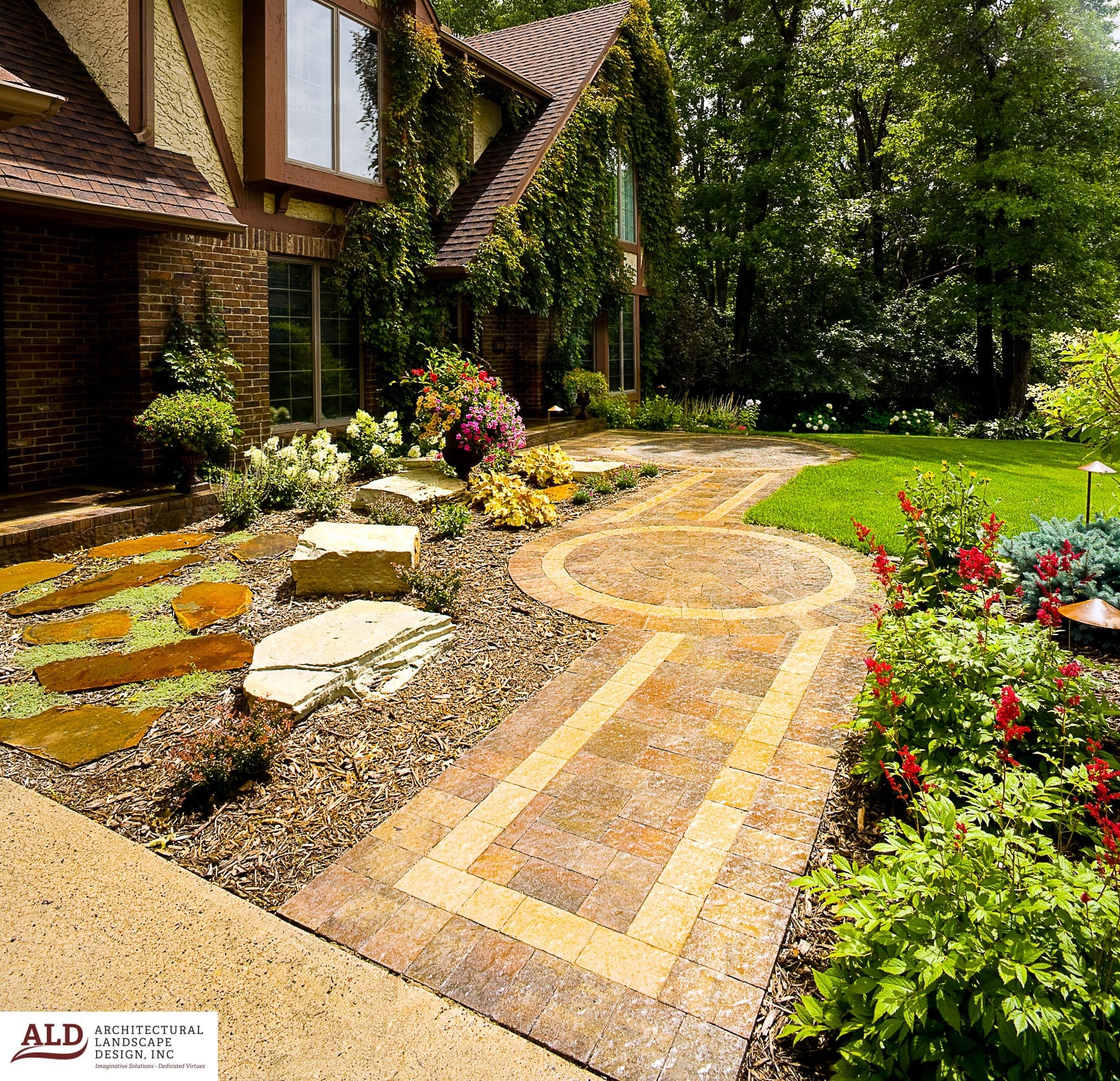
Your backyard is a romantic sanctuary—a private garden filled with calming fountains and green, fertile landscaping. But first impressions matter. To fully enjoy your paradise, the entrance must provide a smooth transition from the inside of your home to the inner sanctum of your backyard.
The right walkway connects one area of your backyard to another and guides you and your guests into the heart of your landscaping. Planning the right path for a walkway takes careful consideration of the space.
Consider the following when planning a new walkway project.
Respect the Natural Flow
Before building a walkway, it’s important to know how you and your guests naturally enter the backyard.
The architecture of your home may allow for multiple entrances into the backyard. It’s important to construct walkways that work well no matter how you and your guests step outside. You may use sliding doors from the kitchen more often than double doors exiting from a guest room. In that case, it makes more sense for the walkway to start outside the kitchen.
If visitors in your backyard tend to follow a set path from the house into the larger garden, you should build the walkway along that natural path. Encourage what already works, and avoid forcing a contrived path into the yard.
Plot the Course
A path from your back door to your full backyard shapes and defines the spaces in your landscape. By choosing one course over another, you change the shape of the yard.
A straight, long walkway stretches the yard and draws the eye to the back. A curving, winding path can make a yard feel wider, guiding the eye—and the feet—from one edge to the other. And a path that cuts around a corner creates a sense of mystery, encouraging exploration.
You may also choose to use your walkway as a method of controlling how much of your backyard is visible at once. Try concealing sections of the walkway with living fences or blossoming trees. A sense of privacy can encourage focus and meditation.
Use Appropriate Materials
As the first impression to your backyard, a walkway must function in all weather and all seasons. Avoid materials and embellishments that might become slippery in the rain or crack in the winter cold.
Various types of stone usually function best as durable walkways while impressing guests with an old-world sensibility. Gravel withstands more wear and tear without looking out of shape. Mixing various materials can make the path feel natural and will draw less attention away from the landscaping.
And in all cases, the makeup of the walkway should complement the materials used elsewhere in your backyard and the facade of your home.
Light the Way
Safety must be the chief concern when constructing any walkway. You and your guests need to be able to traverse the path into your yard without slipping, tripping, or falling.
To that effect, we need to provide adequate lighting for your walkway.
Ideally, you should meld the design of the lights with the design of your landscaping. Incorporate them into stately gardens or use them as borders along the walkway to draw guests forward.
With the right design and level of light, this technological component to your walkway can make your backyard feel all the more magical after dusk.
Consider Maintenance
Some walkways require regular care and attention while others largely manage themselves. When planning your walkway, determine how much time you intend to spend on maintaining it.
Some walkways must be appropriately sealed to prevent the growth of mold or moss. Others must be mowed as regularly as your lawn. When neglected, the materials in gravel walkways might spread farther than intended.
Each material comes with benefits and drawbacks, but do your research and be realistic about the time and money you’d like to invest.
